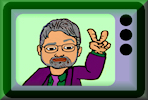Was Thomas Edison more of a business man rather than an inventor
People often make remarks about Thomas Edison such as, "he was primarily a businessman." The attitude would seem to lack the understanding that being successful in business is not mutually exclusive from being a successful inventor.
Many successful inventors realize that experimentation and research takes money. That is why some inventors hold on to certain patent rights, but sell others. They keep the ones they intent to develop and sell off others to raise money to continue their research.
The light bulb was not a single invention, but an ongoing improvement of one idea over another to create a finished product. There were many versions of the light bulb before Edison’s, and there were many versions after Edison. In 1879, Edison was first to devise a lamp that would last in long-term commercial use.
It is also not unusual for inventors to purchase patents to other inventions similar to their own. Sometimes in the larger scope of a project inventors will purchase the rights to similar projects so they have ownership of all the parts to their finished product.
It takes the work of many individuals and many patents (and inventions) coming together to reach a goal. George Westinghouse believed that AC (alternating current) was a better method of power distribution than Edison’s DC (direct current). George Westinghouse was himself an inventor and innovator, as well as a visionary businessman.
In 1885 Westinghouse became interested in the inventions of European Inventors Gaulard and Gibbs and purchased the American rights to their patents for AC current transformers. In 1888 Westinghouse heard of Nikola Tesla and the Tesla Polyphase System. Westinghouse purchased Tesla's alternating current patents on the electric systems and paid Tesla to work with him until they were fully implemented. Westinghouse also had his own team of engineers, such as William Stanley Jr., adding their own inventions in combination with the others to create the finished product. In the case of Westinghouse it was Alternating Current (AC) power transmission.
While Edison was wrong about direct current (DC) becoming the preferred way to deliver electricity to our homes, Edison's ideas to bring electricity to our homes launched the modern electric utility industry. . In 1892 Thomas Edison lost control of Edison Electric, because of his stubbornness to back down on preferring DC over AC. Notorious financier J.P. Morgan arranged the merger of Edison General Electric and Thomson-Houston Electric Company to form General Electric.
If Tesla and Westinghouse had not teamed up to win the war of currents, perhaps General Electric, the off shoot of Edison Electric would have won the war of currents, and would have still moved forward on producing AC generating power plant.
The mythical idea of an inventor
Many people have a mythical picture of an inventor as a scientist who works in a lab with a vision of a finished product in his mind. The mythical inventor tinkers with things until one day, eureka, his vision becomes a reality.
This idea of the inventor reminds me of Dr. Frankenstein from the Mary Shelley horror novel. The mad scientist pieces together his monster, and one day with a flash of lightning, eureka, he has created his monster.
To address the comment that Edison was a business man rather than an inventor, Thomas Edison was an inventor in every sense of the word. He had a passion for trying to understand how things worked. He had a passion for taking existing ideas and making them better.
The Edison Papers
If you really want to learn what Edison invented, I highly recommend you explore The Thomas A. Edison Papers at Rutgers University. The Edison Papers were established under a Board of Oversight which consists of Rutgers, the State University of New Jersey, the National Park Service, the New Jersey Historical Commission, and the Smithsonian Institution.
Thomas Alva Edison Biography | Edison's Inventions | Edison's Patents
Learn more about Thomas Edison
If you are looking to learn more about Thomas Edison the Guru42 Universe and GeekHistory has a lot of information to get you started. You will find Thomas Edison mentioned in the pages listed below.
Thomas Alva Edison prolific inventor and legendary lunatic
You don't need to be a genius to know why Thomas Edison was popular
Nikola Tesla versus Thomas Edison and the search for the truth
The myths and legends of evil villains Steve Jobs and Thomas Edison
In search of the greatest inventors and technology innovators
Henry Ford creates ultimate history museum of Industrial Revolution
Debunking the Nikola Tesla myths by way of defending Thomas Edison
The mythical rivalry between Edison and Tesla full of misinformation
From the War of Currents to the history of electricity in homes
Thomas Edison launched the modern electric utility industry
In researching Geek History we have been asked many questions related to Thomas Edison and the War of Currents. Bookmark this page and check back from time to time as we update it with answers to frequently asked questions and additional resources on Thomas Edison.
Tags: